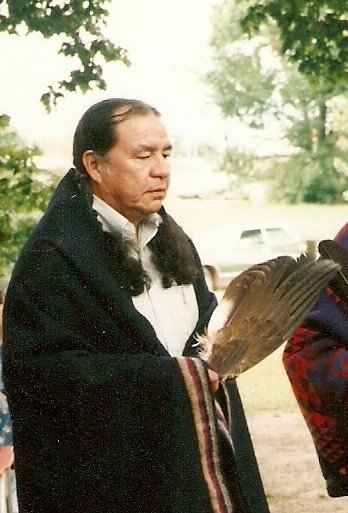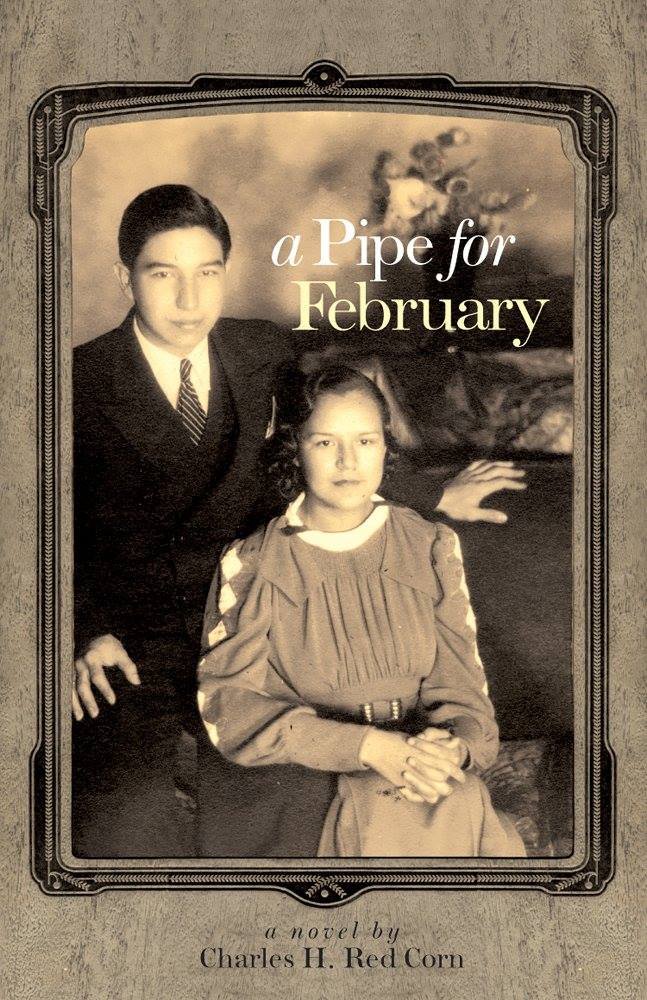
a Pipe for February
by Charles H. Redcorn
Charles H. Redcorn
"Charles H. Redcorn, one of the guiding lights of the Osage community... had many accomplishments and honors bestowed on him. He was a lifelong chronicler of Osage life. He was a Rockefeller Fellow. He mediated between tribal governments and the state and federal governments. He was an organizer and a passionate lifelong advocate for his people. He was one of the writers of the Osage Nation Constitution. He was justifiably beloved, revered and respected. And [the luminous novel, a Pipe for Febrary], now taught in colleges and universities across the country, has to have been one of his proudest achievements." - Martin Scorsese
A Pipe for February Foreword by Martin Scorsese January 12, 2023
I grew up on the Lower East Side of New York City, where “the criminal element,” as they used to say, was part of life. The threat of violence was part of the fabric of our lives. It was always there, so we just learned to live with it. When I started to learn about the Osage murders of the 1920s, I recognized another, very different kind of organized crime. And I realized that there was no way of living with it, because it was much more insidious. So insidious that it took a while for the Osage to really see that it was happening. To them. In 1895, when oil was discovered on the Oklahoma land the Osage people had been forced onto, their circumstances changed dramatically. They became among the wealthiest people in the country, and with that wealth came the influence of European culture on the one hand and white opportunism and exploitation on the other. The threat came from every direction—from the American government, which passed a law in 1921 requiring each Osage to have a white guardian to manage their money; from carpetbaggers, shysters and grifters; and, worst of all, from “friends” - the white men who were more or less part of the community, who knew the Osage ways and the language and who had married into the families. When I was preparing my adaptation of David Grann’s non-fiction account of the Osage murders, Killers of the Flower Moon, I went deep into the original sources—tribal council records, oral histories, newspaper stories, court transcripts. I also found my way to the writing of John Joseph Matthews and then to this remarkable 2002 novel by the late Charles H. Red Corn, one of the guiding lights of the Osage community. For me, the most striking aspect of A Pipe for February is the atmosphere in Pawhuska and throughout the Osage Nation, the sense of leisure and sophistication among the younger Osage exemplified by the hero, John Grayeagle, thoroughly assimilated into American (and European) high culture. But they were also rooted in the history of their people, spoke the language and knew the old ways. I was fascinated by the details—by the pipe itself most of all, and by the handling of the pipe as if it were a human being. A “pipe person.” And I was deeply impressed by the way the novel unfolded. The pace, the atmosphere, the mood—the sense of wealth and leisure is almost breezy at the start, and just like John Grayeagle and his cousins, the realization that something evil is happening settles in little by little, one small hint and turn at a time.
Miles Thorpe Red Corn poses with Leo and his Dad.
Wah-Kon-Tion, Peace Clan
Miles Thorpe Red Corn (Osage name Wah-Kon-Tion), a budding playwright and filmmaker, is a member of the Osage Nation, and a descendant of the Caddo and Pottawatomi Nations. He was given his middle name borrowed from his cousin, the Indigenous athlete and Olympian, Jim Thorpe. As well as being an active member of his Osage Tribe and participating in tribal dances since he was 3, he is a 'Name-Giver' in his Clan, a duty which has been passed down through countless generations.
Miles grew up in Norman, Oklahoma, with his father, actor Yancey Red Corn, and his grandfather, Charles Red Corn, an Osage writer, and author of A Pipe for February, and his grandmother. Jeri Red Corn is a Caddo artist, credited with single handedly reviving the lost art of traditional Caddo Pottery. Miles grew up very close to his grandfather and learned the craft of writing through him.
Miles is a self-taught writer, an interest fostered in him since he was a child. Miles has a short film in development, and several plays and screenplays written. As well as working in film production on Martin Scorses's Killers of the Flower Moon, he worked as the personal assistant to the film's publicist, Larry Kaplan, later working with the assistant to the producer's office, Kim Mott. He has also interned with the Directory of Photography of award-winning documentary filmmaker, Ken Burns, on his latest project. Miles carries a passion for native storytelling, as well as a love for film.




